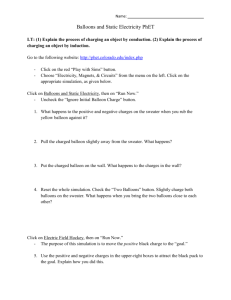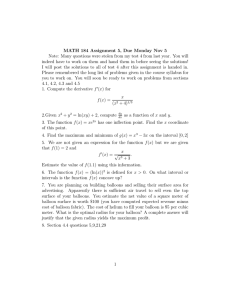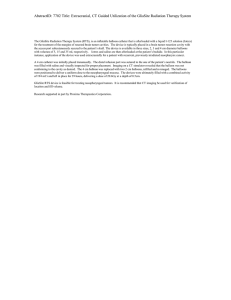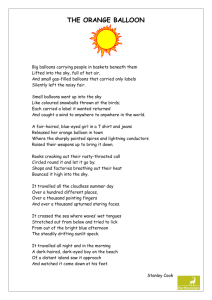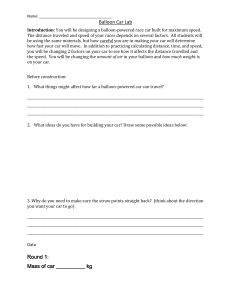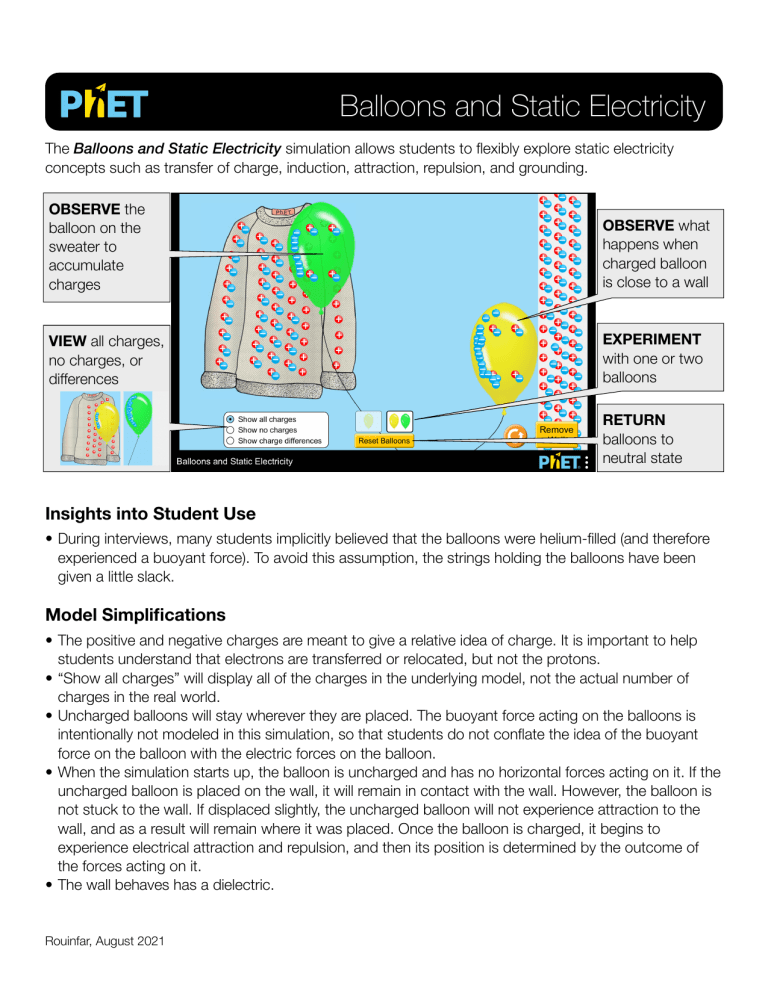
Balloons and Static Electricity The Balloons and Static Electricity simulation allows students to flexibly explore static electricity concepts such as transfer of charge, induction, attraction, repulsion, and grounding. OBSERVE the balloon on the sweater to accumulate charges OBSERVE what happens when charged balloon is close to a wall VIEW all charges, no charges, or differences EXPERIMENT with one or two balloons RETURN balloons to neutral state Insights into Student Use • During interviews, many students implicitly believed that the balloons were helium-filled (and therefore experienced a buoyant force). To avoid this assumption, the strings holding the balloons have been given a little slack. Model Simplifications • The positive and negative charges are meant to give a relative idea of charge. It is important to help students understand that electrons are transferred or relocated, but not the protons. • “Show all charges” will display all of the charges in the underlying model, not the actual number of charges in the real world. • Uncharged balloons will stay wherever they are placed. The buoyant force acting on the balloons is intentionally not modeled in this simulation, so that students do not conflate the idea of the buoyant force on the balloon with the electric forces on the balloon. • When the simulation starts up, the balloon is uncharged and has no horizontal forces acting on it. If the uncharged balloon is placed on the wall, it will remain in contact with the wall. However, the balloon is not stuck to the wall. If displaced slightly, the uncharged balloon will not experience attraction to the wall, and as a result will remain where it was placed. Once the balloon is charged, it begins to experience electrical attraction and repulsion, and then its position is determined by the outcome of the forces acting on it. • The wall behaves has a dielectric. Rouinfar, August 2021 Suggestions for Use Lecture Demo • Have students rub a balloon on a sweater, and sketch what they think is happening to the charges. Compare to the simulation. Sample Challenge Prompts • Predict what happens when a charged balloon is moved closer to the neutral wall. Draw a picture. • After rubbing the balloon on the sweater, how does the charge on the balloon compare to the charge on the sweater? What happens to the positive charges? What happens to the negative charges? Draw a picture. • Remove the wall, and use two balloons to explore attraction and repulsion. How do the +/- symbols help you decide whether something attracts or repels? • Explain how a balloon can be strongly or weakly attracted to the sweater. See all published activities for Balloons and Static Electricity here. For more tips on using PhET sims with your students, see Tips for Using PhET. Rouinfar, August 2021

